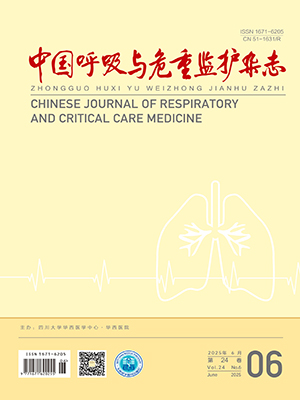Objective To explore the prognostic value of early lactate clearance rate in patients with respiratory failure.
Methods 117 patients with respiratory failure and elevated blood lactate, admitted into respiratory intensive care unit( RICU) between January 2010 and December 2011, were retrospectively analyzed. Arterial lactate and arterial blood gas were measured before and 12h, 24h, 48h, and 72h after treatment. Then12h lactate clearance rate was calculated. The acute physiology and chronic health evaluation Ⅱ( APACHEⅡ) score was evaluated before and after 12h treatment. The mortality were compared between subgroups with different lactate normalization time( lt;24 h, 24 ~48 h, 48 ~72 h, and gt;72h, respectively) . The clinical data was compared between subgroups with different prognosis ( survival or non-survival ) and between subgroups with different lactate clearance rate( ≥10% as high lactate clearance rate, lt;10% as low lactate clearance rate) .
Results The mortality of the patients with lactate normalization time in less 24 hours was significantly lower than that of the patients with lactate normalization time more than 72 hours ( 5. 3% vs. 89. 2% , P lt; 0. 001) . The 12 hour lactate clearance rate of the survival group was significantly higher than that of the non-survival group [ ( 43. 6 ±26. 8) % vs. ( 12. 3 ±39. 1) % , P lt;0. 01] . The mortality of the patients with high lactate clearance rate was significantly lower than that of the patients with lowlactate clearance rate( 25. 8% vs. 71. 4% , P lt;0. 01) .
Conclusion Early lactate clearance rate can be used as a marker for prognosis of patients with respiratory failure.
Citation: MA Shengjun ,CHEN Hong,DUANJun. Prognostic Value of Early Lactate Clearance Rate in Patients with Respiratory Failure. Chinese Journal of Respiratory and Critical Care Medicine, 2012, 11(6): 562-565. doi: Copy
Copyright © the editorial department of Chinese Journal of Respiratory and Critical Care Medicine of West China Medical Publisher. All rights reserved




